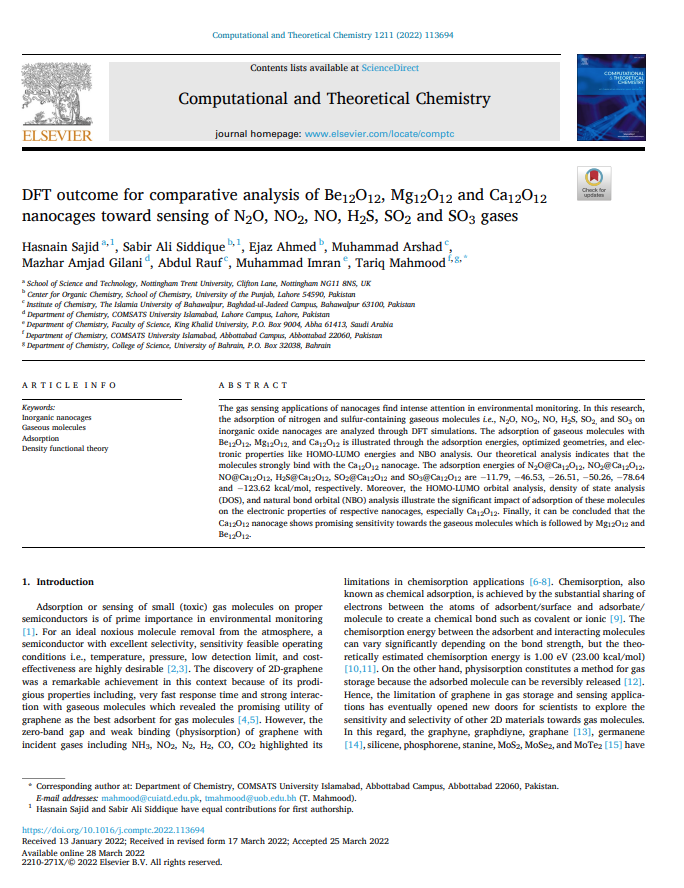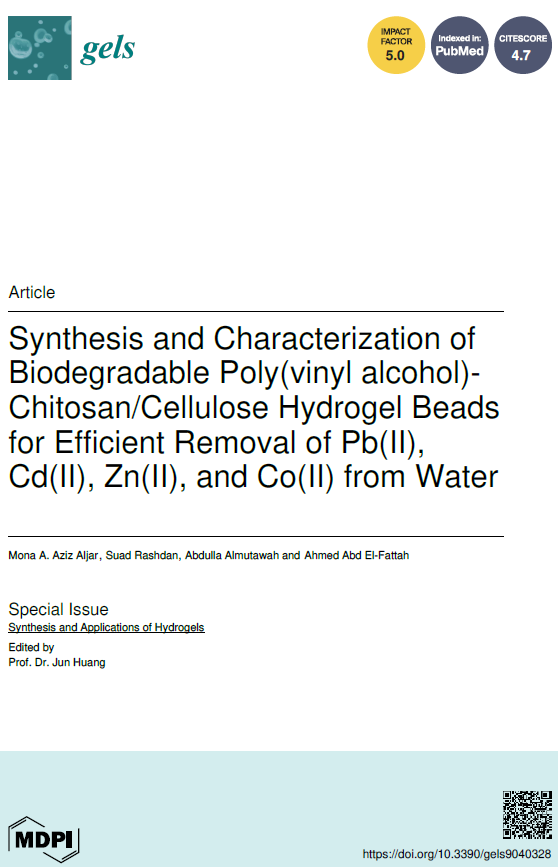Document
Polypyrrole- and Polyaniline-Coated Cotton Fabrics as Efficient Adsorbents for the Pharmaceutical Water Contaminants Diclofenac and Salicylic Acid
Linked Agent
Tawakey, S.H, Author
Amer, W.A, Author
Ayad, M.M, Author
Madkour, T.M, Author
El-Sayed, M.M.H, Author
Title of Periodical
Polymers
Country of Publication
Kingdom of Bahrain
Place Published
Sakhir, Bahrain
Publisher
University of Bahrain
Date Issued
2023
Language
English
Subject
English Abstract
Abstract:
The emerging pharmaceutical contaminants diclofenac (DCF) and salicylic acid (SA) pose potential hazards to humans and living organisms due to their persistence in water environments. In this work, the conductive polymers polypyrrole (PPY) and polyaniline (PANI) were successfully coated on cotton fabrics, as confirmed by FTIR and SEM measurements. The coated fabrics efficiently removed DCF at pH 5.3 and SA at pH 4, with removal efficiencies that exceeded 90% and 70%, respectively. Adsorption was rapid for most of the tested contaminant–fabric systems and reached equilibrium within 20–30 min. The best adsorption performance for both contaminants was shown on the PPY-coated fabrics, which yielded adsorption capacities of about 65 and 21 mg/g for DCF and SA, respectively. This could be explained by molecular modeling simulations, which mostly estimated higher total cohesive energy densities for adsorption on the PPY-coated fabrics than on the PANI-coated ones. The adsorption mechanism involved both coulombic electrostatic attractions and non-coulombic van der Waals and π-π stacking. The fabrics could be reused for three adsorption– desorption cycles. Immobilization of the conductive polymers on cotton fabrics provides a facile method for their handling and collection during adsorption and regeneration cycles while maintaining their multi-functionality in adsorbing different contaminants.
Member of
Identifier
https://digitalrepository.uob.edu.bh/id/e3f4da55-9635-4e90-a196-3421d525a072
Same Subject


